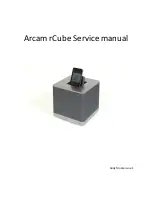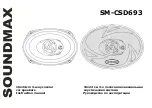
Geschäftsführer: Dr. Bernt Götz • Telefon 03641/66880 • Fax 03641/668866 • www.piezojena.com
80
Trigger function „moving trigger“ (trgedge,6)
This function is parameterized by trgss, trgse, trgsi und trglen. On each period, only one trigger
appears, the trigger point “moves” at every period by its increment (trgsi). After reaching the end
position (trgse) the trigger point “moves” backward.
…
trgse-n*trgsi
trgse (end point)
trgse (end point)
trigger at trgss+n*trgsi (n=2)
trigger at trgss+n*trgsi (n=1)
start point (trgss)
The recognition of edges works as follows:
During the rising edge, the highest measurement value (position) will be stored. If there is a
decrease in the measurement value of more than 0.2% (of total stroke) under the stored value, a
falling edge will be recognized. During the falling edge, the lowest measurement value (position)
will be stored.
If there is an increase in the measurement value of more than 0.2% (of total stroke) over the stored
value, a rising edge will be recognized.
This principle depends on whether or not trgss and trgse are bordered by a working area that
crosses at least 0.2% (of total stroke) out of the borders.
Triggering on setpoint:
At very small trigger distances (near <=1/1000 of total actuator stroke), the influence of internally
electrical noise of the position value becomes noticeable. Wrong trigger outputs can be happen. A
difference between the expected counts of triggers and the happened can indicate this. A solution
for this problem can be triggering on setpoint. This principle uses following circumstances:
The real positioning noise at the actuator is much less than the internally electrical noise
The setpoint (when digitally controlled or internally generated) is noise free
The trigger generation uses the setpoint values. Consider, that the system is used in closed loop
mode to reduce differences between setpoint and real position. Furthermore consider that also in
closed loop mode a small difference between setpoint and real position (tracking error) is still
happened. It depends on loop controller settings and moving velocity. For simple correct this error,
use t
he parameter “trigger offset” (“trgos”). Set “trgos” to the tracking error, the the trigger outputs
are shifted, so that the trigger position is well correspond to the real actuator position. The value of
“trgos” is positive when the real position is following the setpoint (normally case). If the tracking
error is unknown, set “trgos” to 0. On triggering by real position value, the offset is internally always
set to 0.
trgss
lower trigger position










































